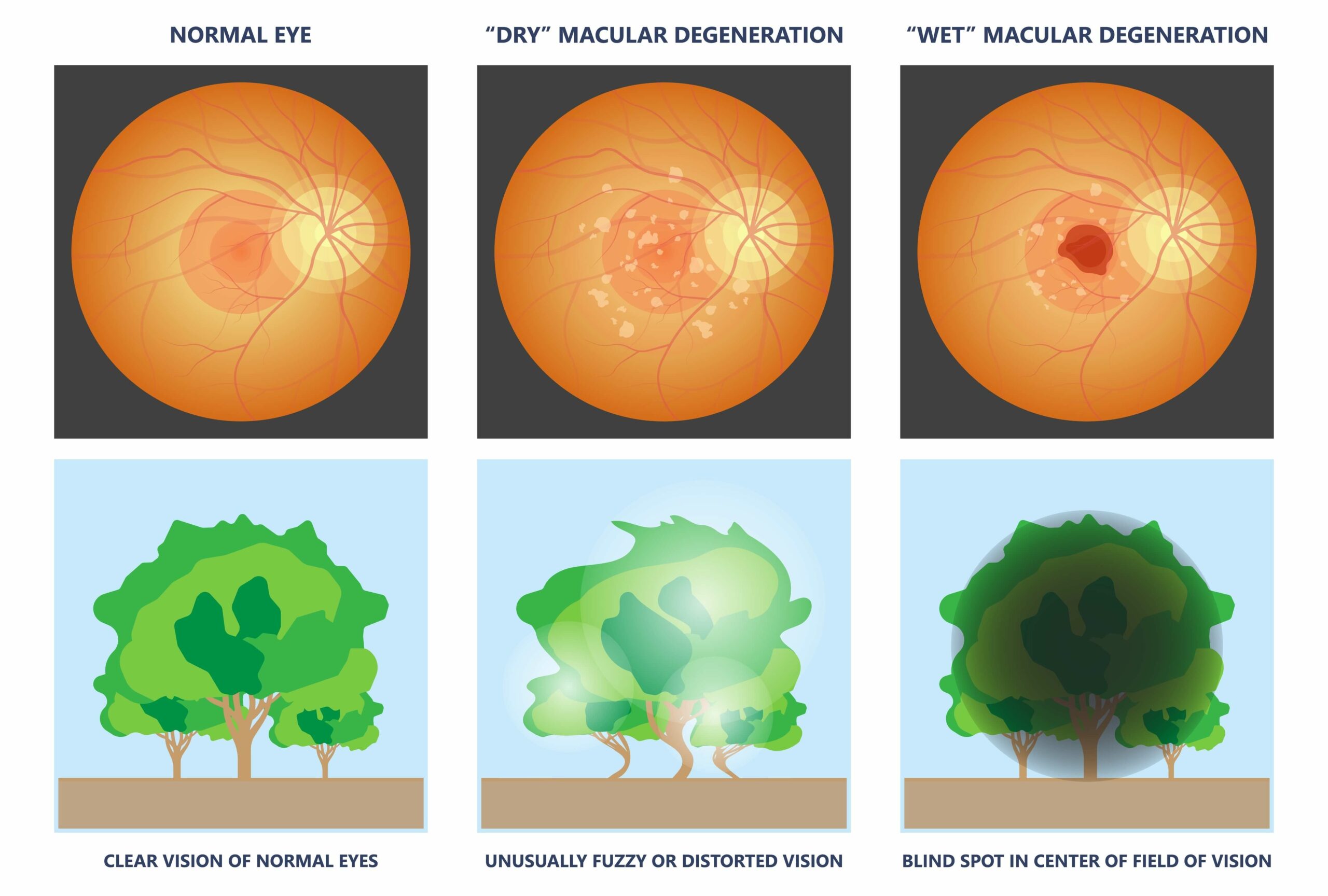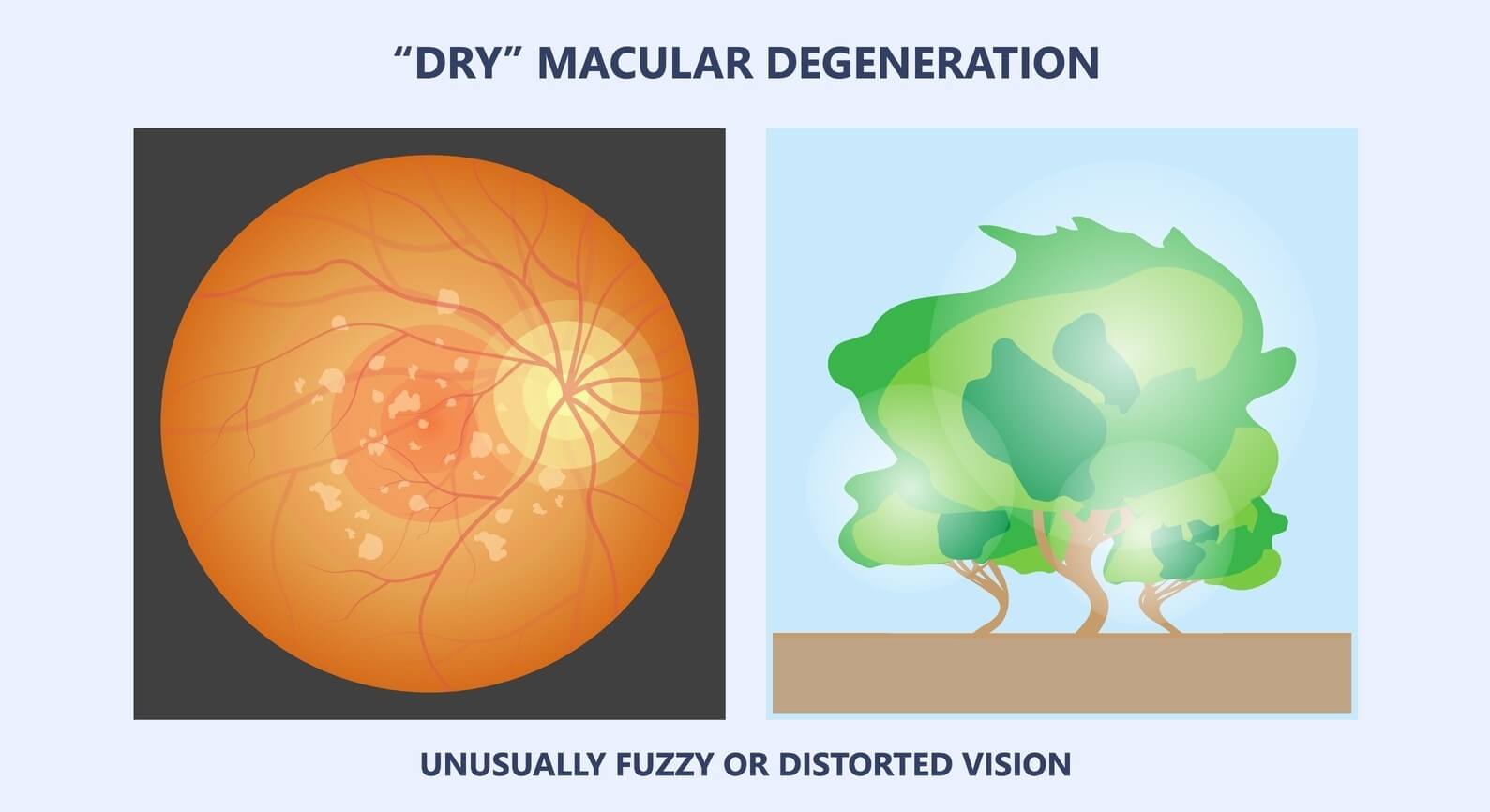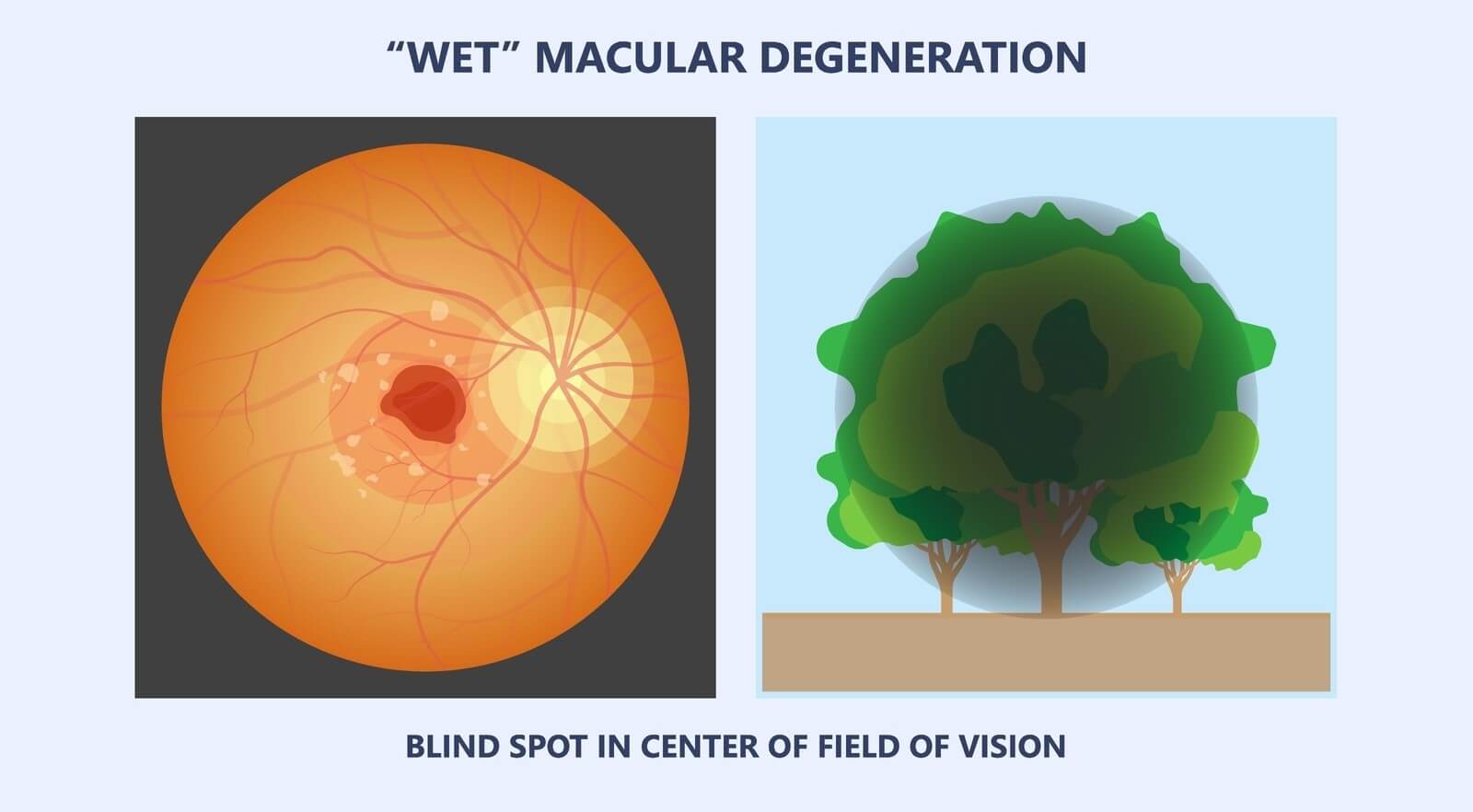Macular degeneration vision loss is the most common cause of vision loss in adults over the age of 65. The condition affects the retina, specifically the cells in the macula, which performs many important eye tasks. Ultimately, macular degeneration leads to an increasing loss of central vision.

In this blog, we’ll examine what macular degeneration looks like, including the stages of degeneration and early warning signs, and we’ll go over some potential treatment options as well.
This first image illustrates what it looks like when our eyes are functioning normally and the center of our vision is crisp and clear.

The early stage of dry macular degeneration is difficult to notice initially, particularly if the condition only affects one eye. However, it can be detected by a specialist during a dilated eye exam. Essentially, this is the stage during which the cells in the eye’s macula begin to sicken, and small parts of the central vision become blurred, as seen in the image.

Some of the early signs of macular degeneration include:
During the progression of macular degeneration vision loss, the blurring gets worse, and those blurred areas increase in size, becoming blind spots called scotomas. It may also become difficult to tell the difference between shades of the same color.
Also known as geographic atrophy, this is the stage when the macula begins to die, and large portions of the central vision become blurred. Visual distortions and blind spots increase in the field of vision, and in some cases, the condition progresses to wet macular degeneration.
A common question for those affected by the condition is: “How long does it take to lose vision with macular degeneration?”
The answer depends on whether you have dry or wet macular degeneration. Wet macular degeneration is when blood vessels grow and leak under the retina. In the early stages, the new vessels may cause the retina to bulge or pucker, resulting in a “twisting” of the vision that resembles looking into a curved mirror.
In the late stage of wet macular degeneration (which progresses much more quickly than dry macular degeneration), abnormal blood vessel growth causes serum and blood to leak into the retina, which—as seen in the image—causes extreme waviness and blind spots in the field of vision.

The exact cause of macular degeneration is not known, although some risk factors include:
The damage from macular degeneration can’t be reversed, but treatments may be able to slow the progression and even preserve existing vision if started early enough:
Dry Macular Degeneration Treatment – For those who’ve retained peripheral vision, low-vision rehabilitation can aid the eye in adapting to the changes. Also, consuming antioxidants, minerals, and vitamins, such as those found in fruits and vegetables, can help reduce vision loss at this stage. In some cases, a telescopic lens implant can improve a narrowed field of vision.
Wet Macular Degeneration Treatment – At this stage, treatment aims to decrease the leakage from abnormal blood vessels, which can be done with medication injected into the eye. Laser treatments are also sometimes used. In either case, treatments will need to be repeated over time.
The best way to minimize the effects of macular degeneration is to have regular screenings by an eye specialist. The physicians and surgeons at Mid-Atlantic Retina are board-certified members of the medical staff at the world-renowned Wills Eye Hospital. Our areas of specialization include macular degeneration, and we have helped develop the latest in cutting-edge treatments.
If you’d like to schedule an appointment with a recognized leader in the field of ophthalmology, reach out to learn more about our services today!